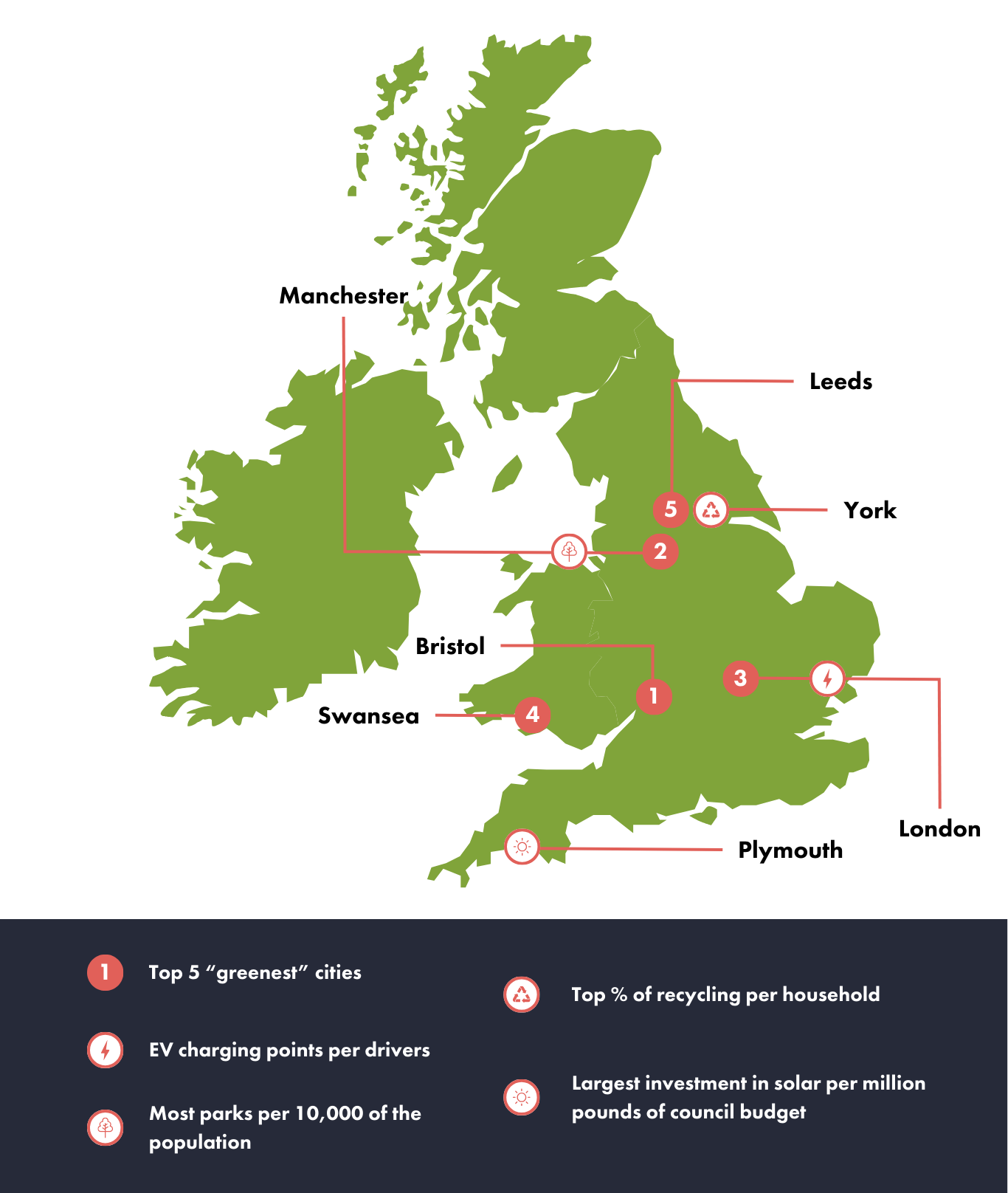
When the pandemic hit and lockdowns were enforced, we saw an unexpected drop in carbon emissions by about 7%. However, the threat of global warming remains a pressing issue that we need to address for the sake of our planet's future. By 2050, the world aims to reach net-zero emissions, and cities across the UK are playing a crucial role in making this vision a reality.
After meticulously analyzing various locations throughout the UK, we’ve put together a list highlighting the “greenest†regions in the country. These cities have demonstrated commendable efforts towards sustainability, setting an example for others to follow.
Which Cities Made the Cut?
At the top of our list stands Bristol, which has truly outdone itself in terms of solar energy investments. The city allocated an impressive £10,462 per million pounds of the Bristol Council’s budget to solar energy projects. This commitment earned them 14 points in our scoring system, not to mention the fact that 24.02% of Bristol is dedicated to green spaces and parks, making it the highest percentage among all cities analyzed.
Coming in second place is Manchester, which boasts 20.42% of its land covered by parks and green spaces. Additionally, the city has an impressive recycling rate of 38.8%, ensuring that air pollution levels remain relatively low at just a grade 2. This combination of greenery and responsible waste management places Manchester as a strong contender in the race toward sustainability.
Rounding out our top three is London, which has invested £1,443.47 per million pounds of the London Council’s budget in solar energy initiatives. The city also recycles 33% of its waste and boasts 1,009.5 electric vehicle charging devices per 100,000 residents, earning them a solid 15 points in our evaluation.
How Did We Determine the Scores?
To rank the UK cities, we focused on four key categories:
- Nature
- Transport
- Emissions
- Sustainability
Within these categories, we examined several factors:
Nature
We calculated the percentage of each city that consists of green spaces and parks. This was done by analyzing the total area of the region and comparing it to the area designated for parks and recreational areas.
Transport
We looked at the number of electric vehicle charging stations available per 100,000 people. This data was obtained from the UK government’s official charging map.
Emissions
We considered air pollution ratings and forecasts. Lower pollution levels translated into higher scores. This information was gathered using the UK government’s forecasting tools.
Sustainability
Our assessment of a city’s sustainability is based on the percentage of waste that is recycled, reused, or composted. These figures were derived by comparing the total waste generated with the portion that is recycled or repurposed.
Additionally, we measured sustainability by evaluating the amount of money spent on solar energy projects per million pounds of the city council’s budget. This includes funds allocated for constructing and maintaining solar installations, whether new or existing. The data on solar investments was sourced from thesolarcentre.org.
Our Approach:
After gathering statistics on these criteria, we ranked each city from 1 to 15 in each category. In cases where cities had identical scores, solar investments played a more significant role in determining their final rankings, reflecting Project Solar’s mission. We then averaged the scores and identified the city with the highest cumulative points as the greenest.
As we collectively strive to achieve net-zero emissions by 2050, we will continue monitoring the progress of cities across the UK, especially when it comes to the expansion of solar energy initiatives.
If you're thinking about switching to solar power, feel free to reach out to our team for guidance and more information.
Medical wrapping paper,Barbecue paper,Food packaging paper,Film kraft paper
Qingzhou Xincheng Packaging Co., LTD , https://www.qzxcbc.com